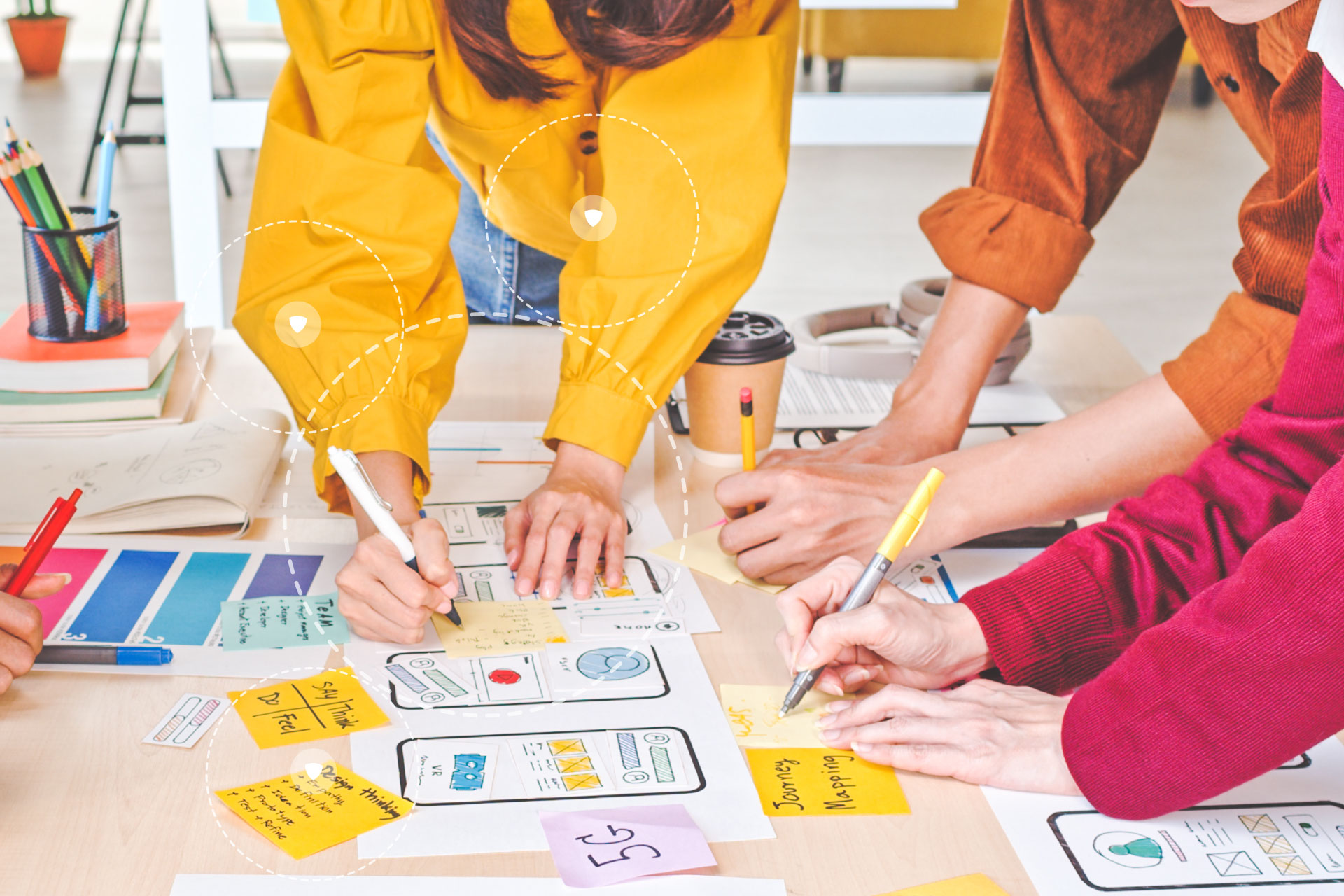So far in the Design Thinking process, your team has worked to empathize with the customer and define the optimal problem statement. Now, they enter the third step in Design Thinking – the Ideate stage. In this step, the team will have a chance to unleash their creativity and pivot from scientific thinking to artistic.
Designers, whether they are involved in generating graphics, laying out mobile design projects, or coding for software/app design, are creators at heart. The challenge of the next stage is to remove all constraints around creativity while generating solutions that fully address the narrowly defined needs of the problem statement.
Ideate with Controlled Chaos
Many people have experienced brainstorming sessions that turned out to be frustrating and unproductive. The secret of getting it right involves a combination of preparation and constraints.
Even the most creative individuals need guidance, inspiration and structure to produce fully formed concepts. The Stanford Design School advises:
“You ideate by combining your conscious and unconscious mind, and rational thoughts with imagination. For example, in a brainstorm you leverage the synergy of the group to reach new ideas and ideate by building on others’ ideas. Adding constraints, surrounding yourself with inspiring related materials, and embracing misunderstanding all allow you to reach further than you could by simply thinking about a problem.”
How to Know What You Don’t Know
Creativity means doing what has never been done and that’s risky, but an even bigger risk is to think too narrowly about what is both possible and practical. Consider these four methods for smashing through boundaries and dreaming bigger:
- Brainstorming – This is the process most closely associated with ideation, where your team studies the problem statement, then sets it aside. For 15-60 minutes, the team records as many unfiltered concepts as possible with no judgements about practicality.
- Braindumping – In contrast to the social interaction of sharing ideas in a brainstorming session, in braindumping all team members jot down whatever solutions immediately come to mind, quietly and to themselves, freeing them up from the influence of their fellow teammates. At the end of the braindump time limit, all members present their ideas and narrow them down together.
- Brainwriting – Like a specialized form of brainstorming, brainwriting refers to a chain of idea building where each person writes out a single idea, then passes it to the right for the next person to build on it.
- Brainwalking – Instead of passing the ideas around in a circle as above, in this technique the ideas stay put and the participants trade positions around the table. Movement changes perception and keeps energy levels elevated for breakthrough thinking.
Micro-stages in Ideation
To balance out idea generation against idea selection, many teams find it helps to break down ideation into two micro-stages, that must have little to no overlap:
1. Free-form idea generation in a judgment-free zone where everyone is heard in equal parts:
Research by Google on high performance teams found that the three ideal conditions for achievement are a) the shared belief that the team is a safe place for risk-taking, without fear of embarrassment or ridicule; and b) the amount of time spent speaking was roughly equally distributed among all team members. Teams don’t normally arrive at that state without coordination and management by a sensitive team lead.
2. Careful selection where top ideas are evaluated for prototype potential:
There are many excellent ideas that the company won’t have the resources or talent to execute with precision. There are also winning concepts that can’t function without a cluster of related developments, as in the case of Uber and ridesharing. This concept couldn’t work until mobile phones, cellular coverage and private drivers reached a specified density threshold. Teams often select the top two or three ideas based on categories like “Most unexpected solution” or “Most likely to delight customers.”
If the team arrives at the end of the second micro-stage without consensus around the most logical prototype for development, it makes sense to rerun the first micro-stage and dig deeper into unstated assumptions, which must be surfaced and then tossed aside.
Making It Real
When moving on from the Ideate stage to Step 4, the Prototype stage, the team needs to bring a new set of talents and skills to the forefront. The next stage requires them to grow into master builders. In our next blog in this series, we will examine how to fail quickly and cheaply, so you can get to market faster with a minimum viable product (MVP).
Looking to stay on top of the latest trends & insights? Check out our blog and follow us on Instagram and LinkedIn to stay in the loop.
